interview
Master of contrasts
Clemens ASCHER | Photography
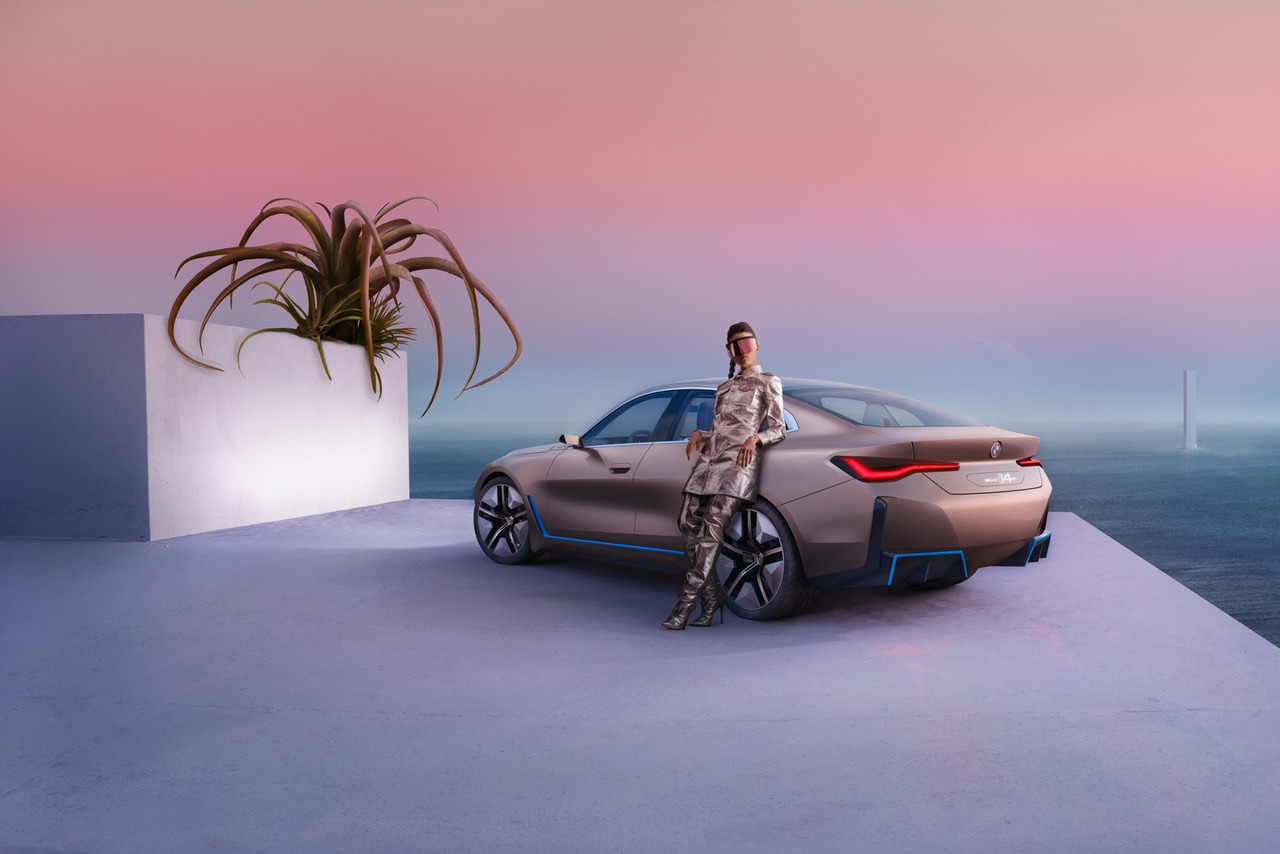
Wistful, conceptual, composed: these adjectives can be used to describe all the works of Clemens Ascher. And yet they could hardly be more different. In Ascher’s oeuvre, staged and perfectly lit collage works stand vis-à-vis analogue black and white photographs. However, there are clear parallels in the imagery.
It wouldn’t be an overstatement to say that he was practically born with a camera in his hand. Born in Innsbruck in 1983 as the only child of two photographers, Clemens Ascher naturally grew into photography: From an early age, the Austrian accompanied his parents to photo shoots and assisted them on advertising jobs for the tourism industry. To this day, photography remains the medium of his choice when it comes to expressing himself artistically: “When I engage with painting or architecture, I do so via photography. It happens quite naturally because I grew up with it.” Clemens Ascher studied art direction with a focus on advertising photography at Miami Ad School in Hamburg. He already placed his focus on the three pillars of art, fashion and vehicles (automotive & advertising) back then. Clemens Ascher worked as a freelance photographer in London for four years before moving to Vienna, where he lives and works today and works for clients worldwide.
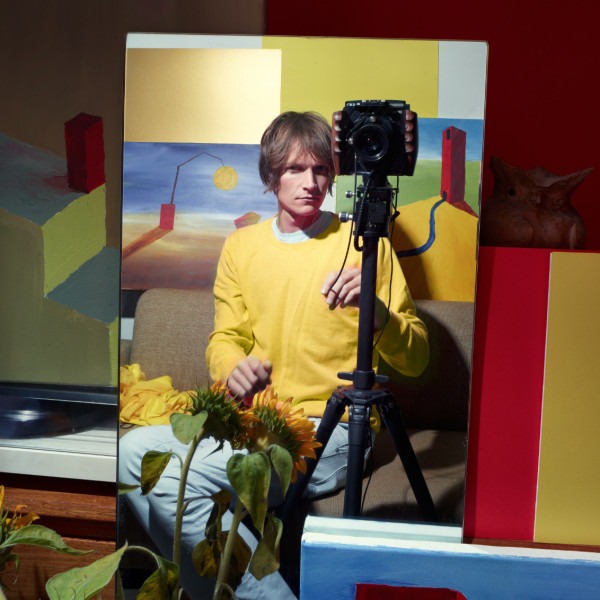
SCHIERKE Artists: Your oeuvre encompasses worlds that could hardly be more different: digital and analogue, black and white and colour, staged and real. How does an artist become so contradictory?
Clemens Ascher: I’ve decided very consciously not to settle for only one direction but to follow all my interests which then lead to two diametrically opposed photographic approaches. I have a wide variety of interests: ancient rock paintings and hieroglyphs inspire me just as much as contemporary art, fashion or architecture. What unites all my works is that they are conceptual and always very meticulously composed.
In your staged collage works, you create unseen visual worlds and stage real people and vehicles in surreal environments. What effect are you aiming to achieve on the observer?
My main aim is to inspire people. I believe that this moment when you’re not sure whether something is real or not can lead to inspiration. I use a very reduced and form oriented visual language to create a world that is somehow familiar but doesn’t really exist. That creates something peculiar – a dreamlike sensation which evokes new and different feelings in the observer which cannot be achieved through ordinary photography.
Clemens Ascher: I’ve decided very consciously not to settle for only one direction but to follow all my interests which then lead to two diametrically opposed photographic approaches. I have a wide variety of interests: ancient rock paintings and hieroglyphs inspire me just as much as contemporary art, fashion or architecture. What unites all my works is that they are conceptual and always very meticulously composed.
In your staged collage works, you create unseen visual worlds and stage real people and vehicles in surreal environments. What effect are you aiming to achieve on the observer?
My main aim is to inspire people. I believe that this moment when you’re not sure whether something is real or not can lead to inspiration. I use a very reduced and form oriented visual language to create a world that is somehow familiar but doesn’t really exist. That creates something peculiar – a dreamlike sensation which evokes new and different feelings in the observer which cannot be achieved through ordinary photography.
Photography has always been an inherent part of my life. Like a second mother tongue.
What was your most exciting commercial assignment to date?
The series for Lincoln USA was a very important and crucial job for me. It was my first major job for the automotive industry and also determined the direction and style of my work. That was the first time I started with a sketch and reconstructed the settings to create a new reality.
In other words, your staged, fictitious works are based on a simple sketch? What does the rest of the process look like?
Exactly. I always start off with a small drawn sketch – which later often has a surprising resemblance to the final image. These sketches are mainly about two dimensional graphical compositions that I then translate into a three-dimensional spatial or architectural composition that forms the stage for my protagonists.
Your settings are reminiscent of the scenery in a play and your protagonists almost seem like puppets. How do you achieve this effect?
I believe that the surreal and painterly effect of my images comes from the fact that I stick so close to my sketches and not to reality. The process works like this: I make a digital collage of architectural elements and textures to build my “stages". I also work with CGI if I can’t find what I have in mind. Then I photograph actors or models in the studio and insert them into the scenarios. This process creates this slightly surreal effect.
The series for Lincoln USA was a very important and crucial job for me. It was my first major job for the automotive industry and also determined the direction and style of my work. That was the first time I started with a sketch and reconstructed the settings to create a new reality.
In other words, your staged, fictitious works are based on a simple sketch? What does the rest of the process look like?
Exactly. I always start off with a small drawn sketch – which later often has a surprising resemblance to the final image. These sketches are mainly about two dimensional graphical compositions that I then translate into a three-dimensional spatial or architectural composition that forms the stage for my protagonists.
Your settings are reminiscent of the scenery in a play and your protagonists almost seem like puppets. How do you achieve this effect?
I believe that the surreal and painterly effect of my images comes from the fact that I stick so close to my sketches and not to reality. The process works like this: I make a digital collage of architectural elements and textures to build my “stages". I also work with CGI if I can’t find what I have in mind. Then I photograph actors or models in the studio and insert them into the scenarios. This process creates this slightly surreal effect.


Your protagonists eat fast food and drink chai latte from single-use cups. Is your work also a form of social criticism?
Societal control by means of generated desires is one of the main aspects of my free work. Advertising plays a crucial role here, of course. None of us can resist the subconscious effect it has on us. In the best-case scenario, you become aware of this phenomenon by dealing with it. Nevertheless, I try not to judge in my works. I rather find it interesting and aim to spark a thought process in the viewer by pointing things out and taking a somewhat ironic approach.
You mentioned the Lincoln production that helped define the style of your work. In the meantime, you have worked on many more jobs for automotive clients, including Lexus, BMW and Mercedes-Benz. What constitutes contemporary vehicle advertising in your opinion?
I think automotive advertising could and should become more of a laboratory for creativity and visual communication. It should create entirely new, never before seen imagery that really transports the feeling for the new model, and thus for the future. I develop unique imagery for each brand and project that builds up an entire world around the car. To do that, I mix various different techniques, from collages to CGI, from set construction to conventional on-location photography. I see myself more as an image maker - working always on behalf of the concept.
What else would appeal to you in the automotive area?
I would like to do more projects in the field of electric mobility. The new drive type inspires me to create futuristic visual worlds. At the same time, I’m a huge fan of classic cars.
Societal control by means of generated desires is one of the main aspects of my free work. Advertising plays a crucial role here, of course. None of us can resist the subconscious effect it has on us. In the best-case scenario, you become aware of this phenomenon by dealing with it. Nevertheless, I try not to judge in my works. I rather find it interesting and aim to spark a thought process in the viewer by pointing things out and taking a somewhat ironic approach.
You mentioned the Lincoln production that helped define the style of your work. In the meantime, you have worked on many more jobs for automotive clients, including Lexus, BMW and Mercedes-Benz. What constitutes contemporary vehicle advertising in your opinion?
I think automotive advertising could and should become more of a laboratory for creativity and visual communication. It should create entirely new, never before seen imagery that really transports the feeling for the new model, and thus for the future. I develop unique imagery for each brand and project that builds up an entire world around the car. To do that, I mix various different techniques, from collages to CGI, from set construction to conventional on-location photography. I see myself more as an image maker - working always on behalf of the concept.
What else would appeal to you in the automotive area?
I would like to do more projects in the field of electric mobility. The new drive type inspires me to create futuristic visual worlds. At the same time, I’m a huge fan of classic cars.
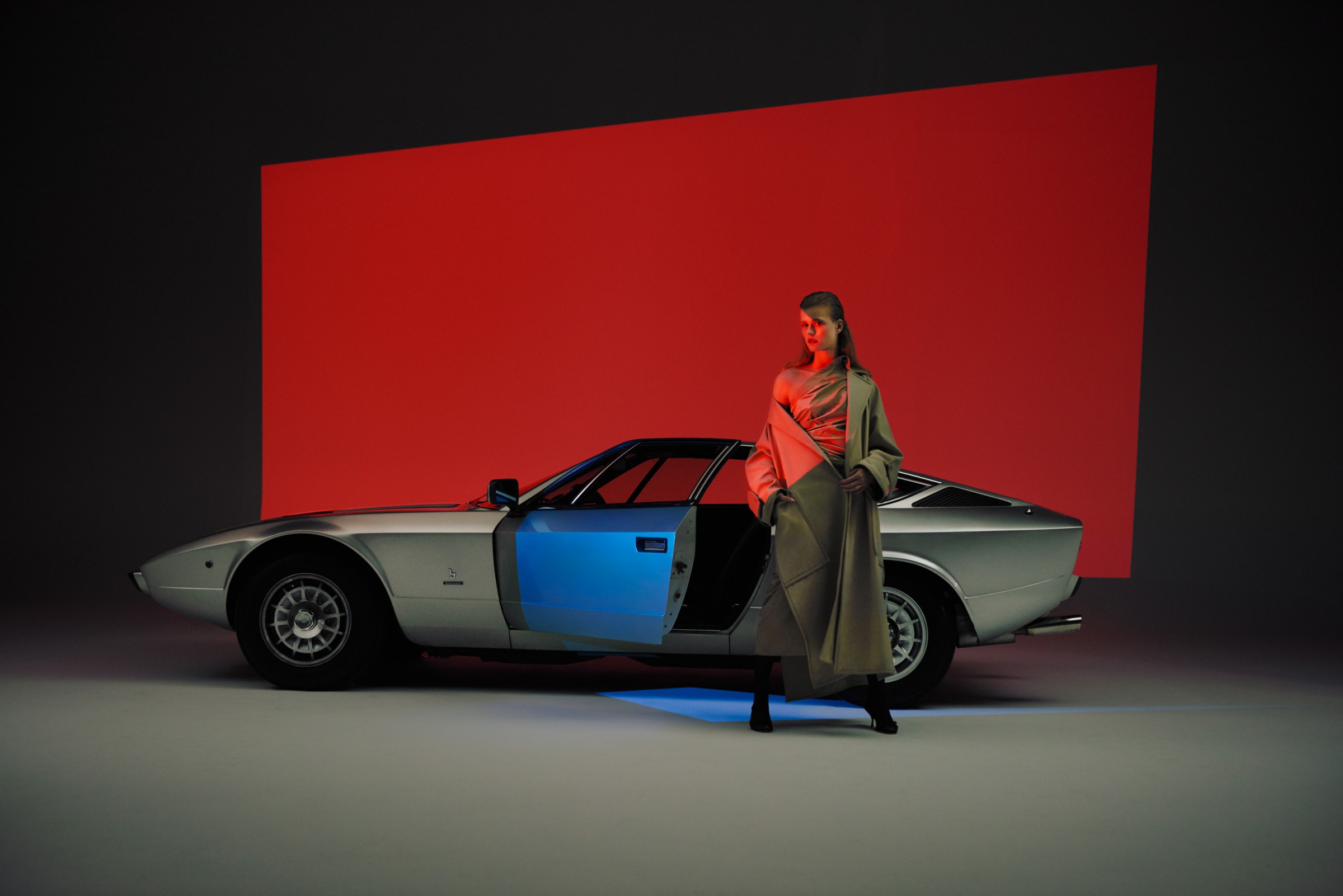
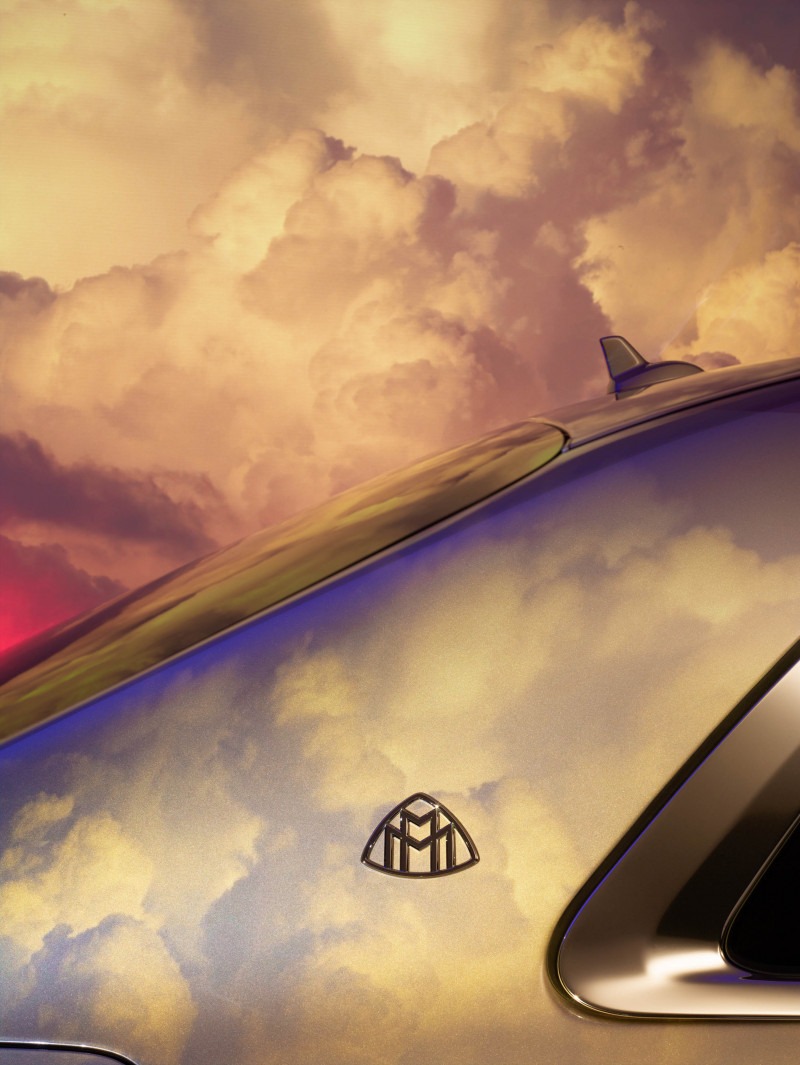
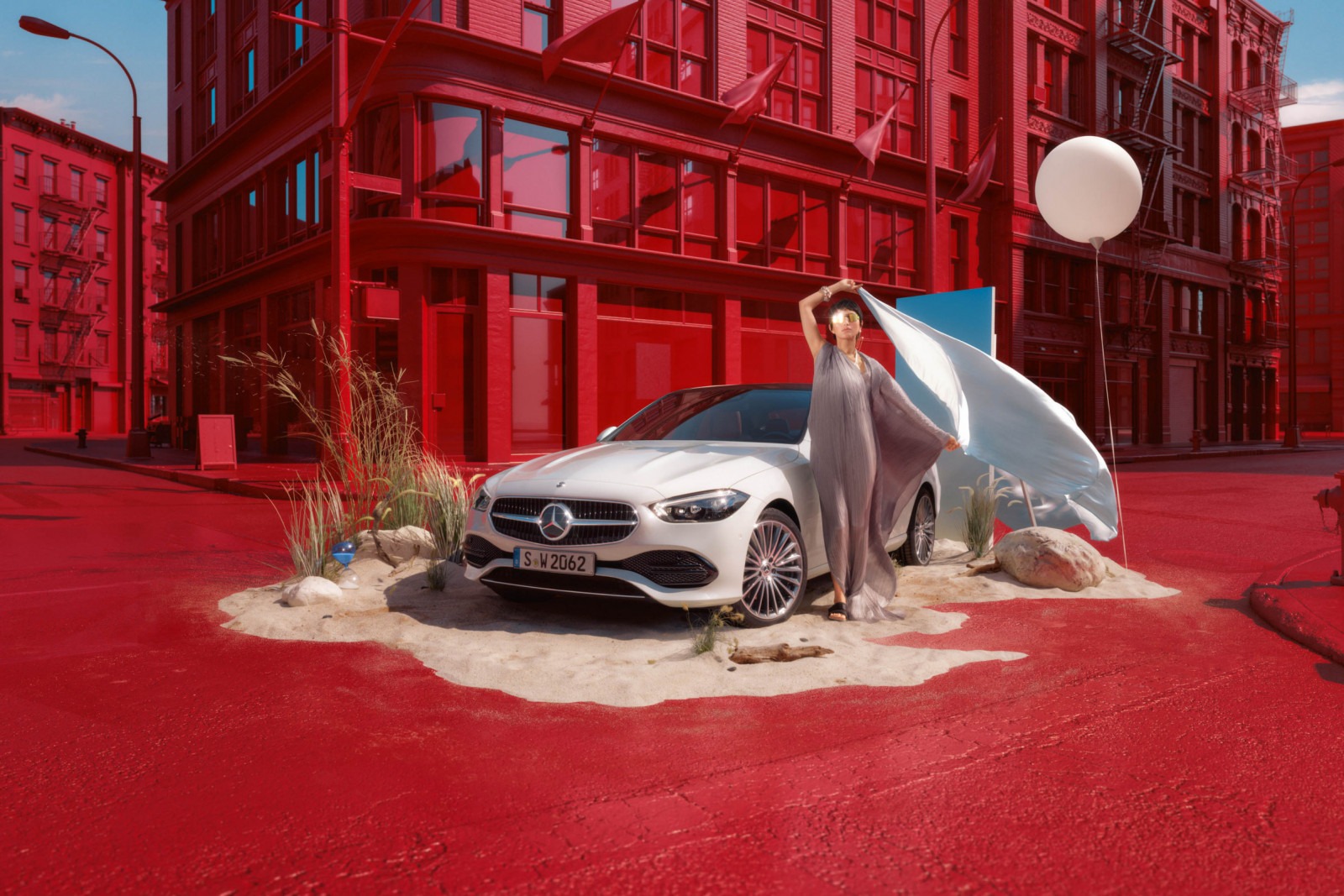
We have spoken about one area of your work for a while now. But you also pursue an entirely different photographic approach …
Exactly. It’s mainly about my series entitled “Of Forms and Traces” that I have been working on for several years. I take a conceptual documentary approach for the forms of the arts in everyday forms. But instead of taking digital, large-format colour photographs, my pictures are analogue, black and white and in small format. I mainly use an old Leica M6 that I inherited from my father.
Your pictures show dilapidated mountain huts, deserted, inscrutable places and industrial wastelands. Do you deal with your home in this work?
Definitely. I’m magically attracted to places for which I feel a sense of yearning. I come across these places when I roam through nature and urban off spaces. I pick one aspect from reality and photograph it in a way that strongly emphasises the pure form and reveal it's abstract quality. At the same time, reality is always present and tells stories about society or even individual people. I believe I can say a lot about people without showing them in person but showing their traces.
Despite all the obvious differences, there are also striking parallels in the composition of your works. How does this happen?
At the end of the day, I am always fascinated by the same geometric forms, shapes and compositions. They catch my eye when I take photos. And they come from within me when I draw.
Thank you for the interview, Clemens!
Exactly. It’s mainly about my series entitled “Of Forms and Traces” that I have been working on for several years. I take a conceptual documentary approach for the forms of the arts in everyday forms. But instead of taking digital, large-format colour photographs, my pictures are analogue, black and white and in small format. I mainly use an old Leica M6 that I inherited from my father.
Your pictures show dilapidated mountain huts, deserted, inscrutable places and industrial wastelands. Do you deal with your home in this work?
Definitely. I’m magically attracted to places for which I feel a sense of yearning. I come across these places when I roam through nature and urban off spaces. I pick one aspect from reality and photograph it in a way that strongly emphasises the pure form and reveal it's abstract quality. At the same time, reality is always present and tells stories about society or even individual people. I believe I can say a lot about people without showing them in person but showing their traces.
Despite all the obvious differences, there are also striking parallels in the composition of your works. How does this happen?
At the end of the day, I am always fascinated by the same geometric forms, shapes and compositions. They catch my eye when I take photos. And they come from within me when I draw.
Thank you for the interview, Clemens!


Clemens Ascher’s new book on the series “Of Forms and Traces” will be published by Jungle Books in the autumn of 2022.

